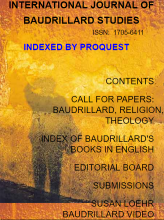In June 2014 the organisation known as ‘Islamic State’ (IS) announced the establishment of a 680km Syrian and Iraqi Caliphate. Since this time, it has exercised large scale massacres of Middle Eastern civilians, executed foreign prisoners, and forced dissenters into sexual and economic slavery (Lister, 2014: 17). To sustain its operational strength and acquisition of territory, the organisation replenishes its expendable armed forces by attracting foreign fighters using propaganda via online communications. Around 22,000 foreign fighters are currently estimated to have travelled to Syria and Iraq to fight for IS (Stern, 2015: 68), and this is number likely to increase in the immediate future. It is also increasingly noted that through online media, IS encourages returned foreign fighters and ‘homegrown’ sympathisers in countries outside of Iraq and Syria to execute attacks on civilian populations. The internationalisation of the threat posed by IS became starkly apparent in 2015 following IS-inspired and in some cases IS-directed attacks on countries including Tunisia, Turkey, Lebanon, France and Indonesia.
